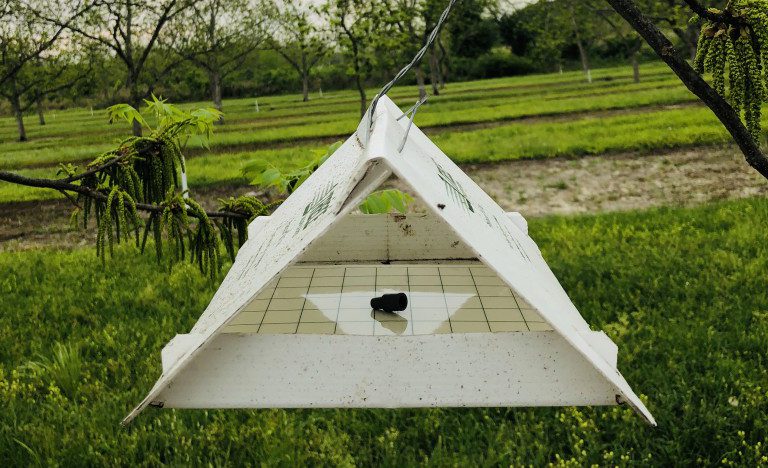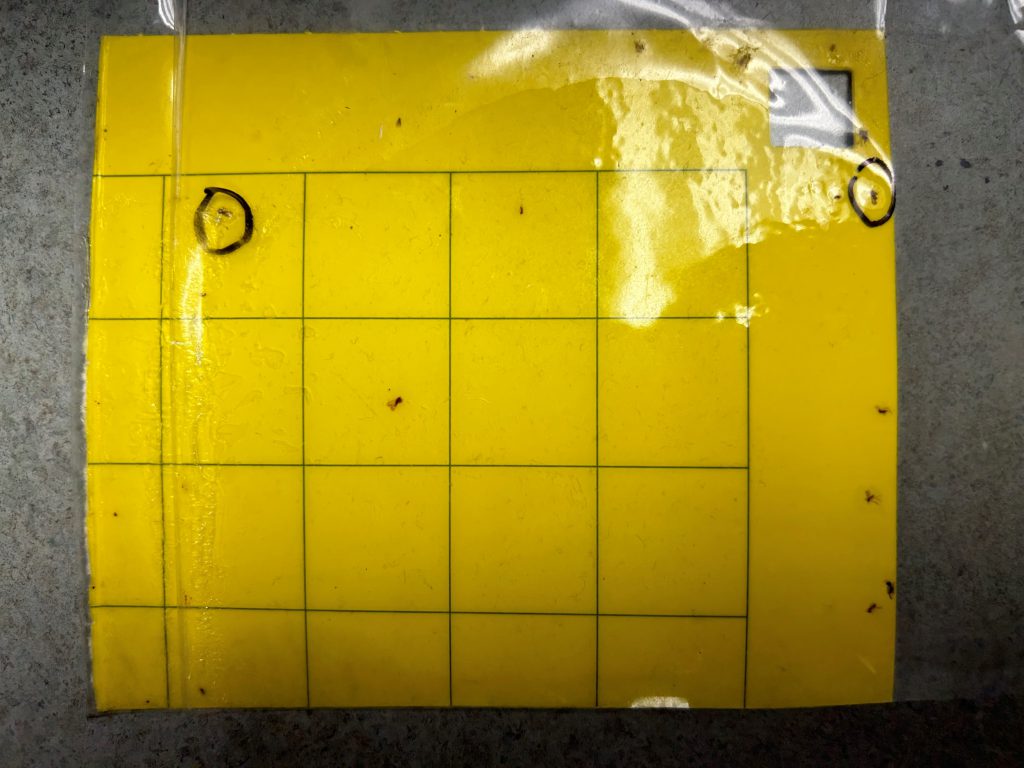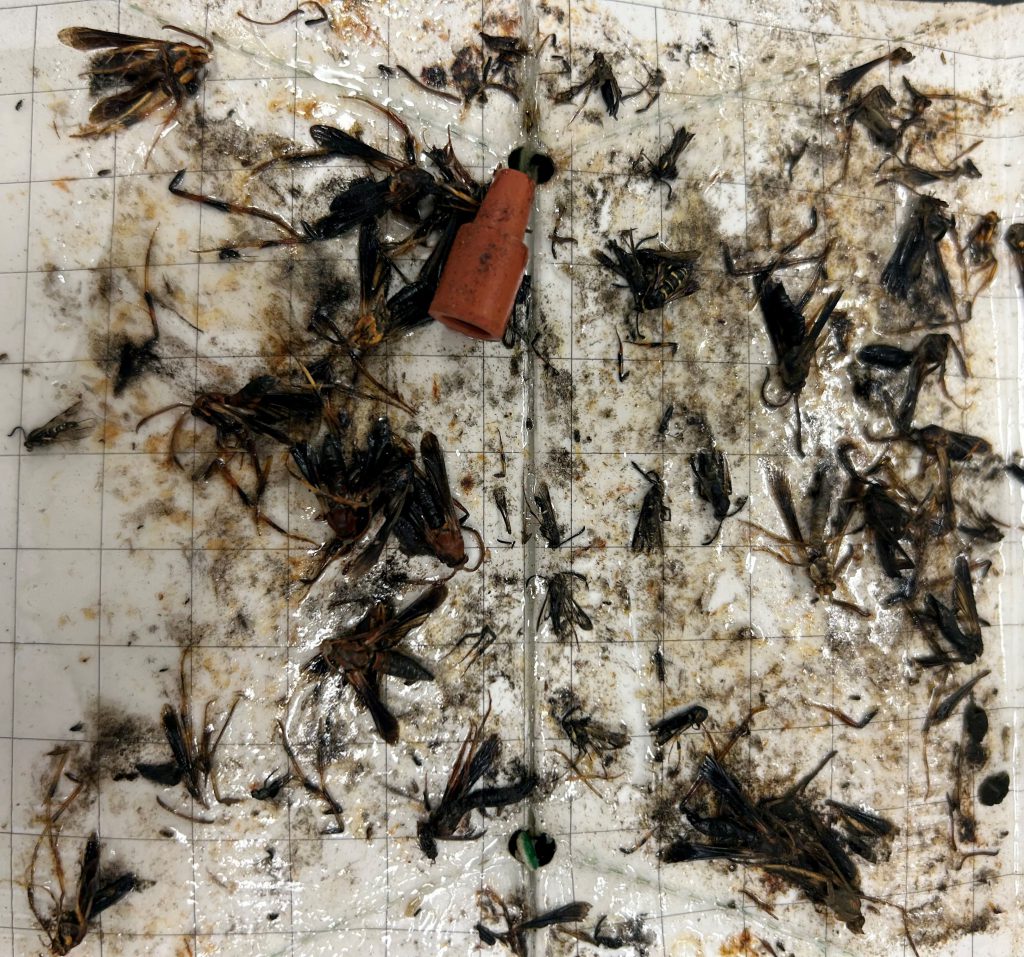Insects use pheromones to attract their mates and communicate with each other. Ants use pheromones to tell fellow ants where to find food. Aphids use pheromones to warn each other about potential predators. And all insects use pheromones to call for a mate.
So what exactly are pheromones? Pheromones are substances that are secreted by an individual and received by another individual of the same species. In humans, pheromones are most commonly found in sweat and detected by the olfactory system. Most animals have a functioning vomeronasal organ inside their noses to detect and process pheromones. However, it is debatable whether adult humans possess a functional vomeronasal organ.
Although most of us may not be able to detect insect pheromones, scientists have been able to identify and synthesize the pheromones of many economically important insects. These pheromones are impregnated on rubber and plastic dispensers and placed in different types of traps depending on the pest. The pheromone traps attract males of the target species. These traps are commonly used for monitoring, but in some cases can be utilized to disrupt mating habits which can help control some pests.
The most common pheromone trap in this part of the country is probably a boll weevil trap. Growing up, I thought they looked like little green lighthouses. These traps consist of a yellow-green cannister with an inverted funnel on top that contains the pheromone. While you may not be growing cotton in your home garden, there are some other common insect pests you may want to monitor and possibly disrupt.

Pecan Nut Casebearer (PNC) – These moths are gray with a dark line of scales on their forewings. PNC moths are about 1/3 inches long. They lay their eggs on the outside of pecan husks in April/early May. Their larvae bore into the base of developing nuts and remain inside the nuts for four to five weeks to feed then pupate. A tent-type trap with pheromone can be hung in a pecan tree in April or May to help monitor for this insect. Depending on how many trees you have, multiple traps can be installed to possibly disrupt the mating cycle of this pest.

Asian Citrus Psyllid (ACP) – These tiny insects are about the size of the tip of a pencil (about 1/8 inches long). They vector the Huanglongbing (HLB) disease also known as citrus greening. This disease blocks the nutrient uptake tissue of citrus trees and eventually kills infected trees. Traps consist of a yellow sticky card with a pheromone bait sometimes impregnated on the twist tie hanger. The citrus industry has been heavily impacted by citrus greening, so monitoring for this pest is very important.

Clearwing Moth – There are numerous species of clearwing moths that bore into the trunks of fruit and ornamental trees and shrubs. One of the most common is the peachtree borer. These insects don’t look like a typical moth. Instead, they resemble wasps. Tent-type pheromone traps can be used to monitor for clearwing moths and potentially disrupt their mating habits. Another common clearwing moth is the ash borer (lilac borer). As their name would suggest, these moths bore into the wood of ash trees, but they also like various Ligustrum species and olive trees.
These are just a few of the species of insects that can be monitored by pheromone traps. To help with the timing of trap dispersal and placement, you should get a grasp of concept of “Degree Days”. Degree day accumulation is used to predict important life events for particular insects such as the average egg laying date, egg hatch date, and larval development. More information on calculating degree days can be found in the article “Predicting Insect Development Using Degree Days” from the University of Kentucky. Fortunately for us, we can skip some of the math by utilizing the AgroClimate Growing Degree Days Calculator. Simply select the weather station closest to you on the provided map and a graph will appear.
- Gardening in the Panhandle LIVE! Program Summary: Pests of Florida Lawns and Landscape Plants - May 28, 2025
- Fun Facts About Ferns - April 30, 2025
- Gardening in the Panhandle LIVE! Program Summary: Freeze Friendly Foliage Plants - April 30, 2025
